Discover 8 hidden attractions, cool sights, and unusual things to do in Boscastle (United Kingdom). Don't miss out on these must-see attractions: Museum of Witchcraft and Magic, Minster Church, and Forrabury and Minster. Also, be sure to include Penpol in your itinerary.
Below, you can find the list of the most amazing places you should visit in Boscastle (England).
Table of Contents
Museum of Witchcraft and Magic
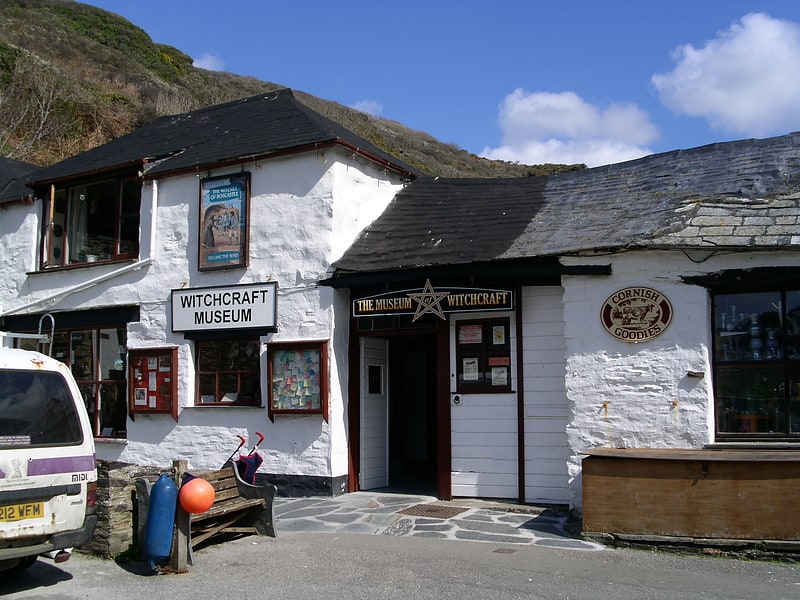
Museum in Boscastle, England. The Museum of Witchcraft and Magic, formerly known as the Museum of Witchcraft, is a museum dedicated to European witchcraft and magic located in the village of Boscastle in Cornwall, south-west England. It houses exhibits devoted to folk magic, ceremonial magic, Freemasonry, and Wicca, with its collection of such objects having been described as the largest in the world.
The museum was founded by the English folk magician Cecil Williamson in 1951 to display his own personal collection of artefacts. Initially known as the Folklore Centre of Superstition and Witchcraft, it was located in the town of Castletown on the Isle of Man. Williamson was assisted at the museum by the prominent Wiccan Gerald Gardner, who remained there as "resident witch". After their friendship deteriorated, Gardner purchased it from Williamson in 1954, renaming it the Museum of Magic and Witchcraft. Gardner's Castletown museum remained open until the 1970s, when Gardner's heir Monique Wilson sold its contents to the Ripley's company.
In 1954, Williamson opened his own rival back in England, known as the Museum of Witchcraft. Its first location was at Windsor, Berkshire, and the next at Bourton-on-the-Water, Gloucestershire; in both cases it faced violent opposition and Williamson felt it necessary to move, establishing the museum in Boscastle in 1960. In 1996 Williamson sold the museum to Graham King, who incorporated the Richel collection of magical regalia from the Netherlands in 2000. The museum was damaged and part of its collection lost during the Boscastle flood of 2004. In 2013 ownership was transferred to Simon Costin and his Museum of British Folklore.
The museum is a popular tourist attraction and is held in high esteem by the British occult community. A charity, Friends of the Museum of Witchcraft, has been established to raise funds for the exhibits. The museum also contains a large library on related topics that is accessible to researchers.[1]
Address: The Harbour, PL35 0HD Boscastle
Minster Church
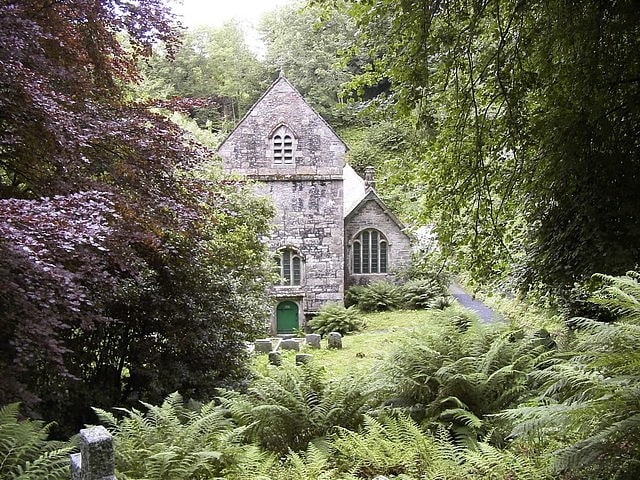
Church in England. The civil parishes to which the Forrabury and Minster parish churches belong were united in 1919 to form Forrabury and Minster parish, within Cornwall, England, UK. The main settlement in the parish is Boscastle. The two rectories had been united in 1800.
The original Forrabury / Minster boundary crossed the river so the harbour end of the village was in Forrabury and the upriver area in Minster. The churches were established some time earlier than the settlement at Boscastle.[2]
Forrabury and Minster
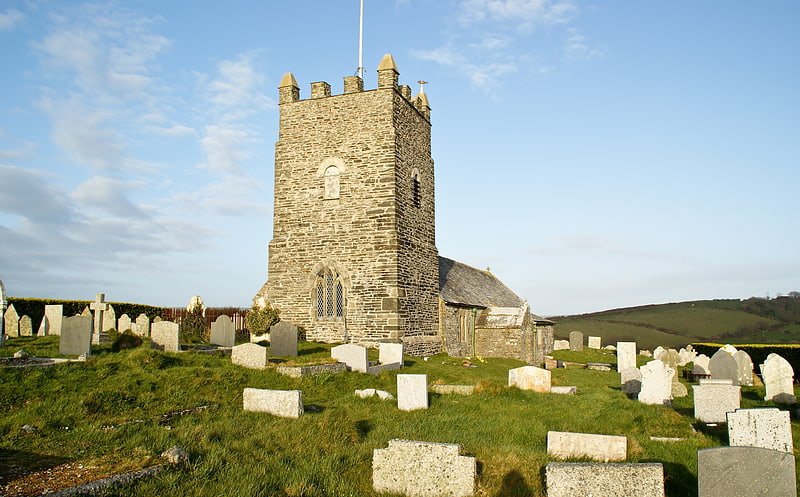
English civil parish. Forrabury and Minster is a civil parish on the north coast of Cornwall, England, United Kingdom. The parish was originally divided between the coastal parish of Forrabury and inland parish of Minster until they were united on the 1st of April 1919.
The parish was in the Registration District of Camelford. It is bounded to the north by the Atlantic; to the east by the parishes of St Juliot, Lesnewth and Davidstow; to the south by Camelford parish; and to the west by Trevalga parish. The population of Forrabury and Minster parish in the 2001 census was 888, which decreased slightly to 838 at the 2011 census.[3]
Penpol
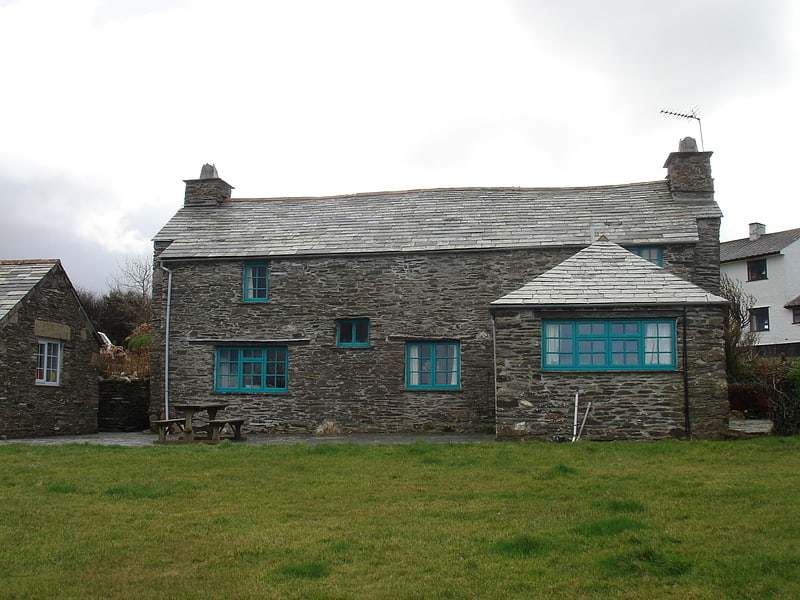
Building. Penpol is a Grade II listed building in north Cornwall, United Kingdom. It is situated two miles east of Boscastle just outside the village of Lesnewth. The building dates from the early 17th century, originally just a two-room house. It served as a pig sty for a significant period before being converted back into a cottage by Mike Raven, a BBC Radio 1 DJ. Raven bought the property in 1973, bringing it up to date and building an extension on the side.
Penpol is a house built in the early 17th century, originally with just two rooms and a passage between them, probably a parlour and kitchen. It is largely build of granite rubble, with a slate roof. There is a 20th-century single story extension added to the house. The whole building was designated as a Grade II listed status on 20 July 1987.[4]
St Julitta's Church
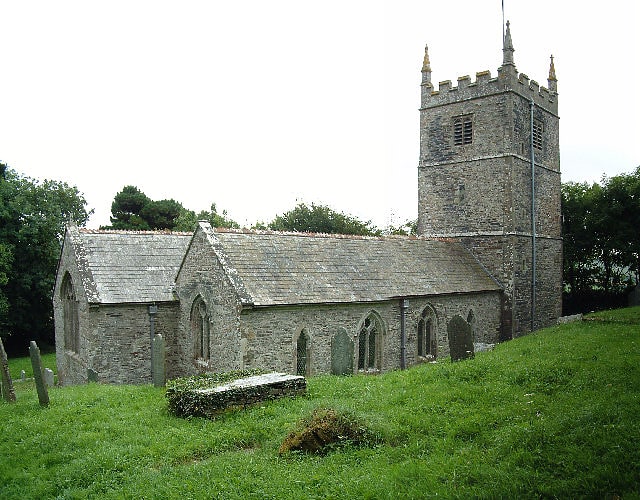
Anglican church in England. St Julitta's Church, St Juliot is a Grade II* listed parish church in the Church of England Diocese of Truro in St Juliot, Cornwall.[5]
St Michael and All Angels' Church
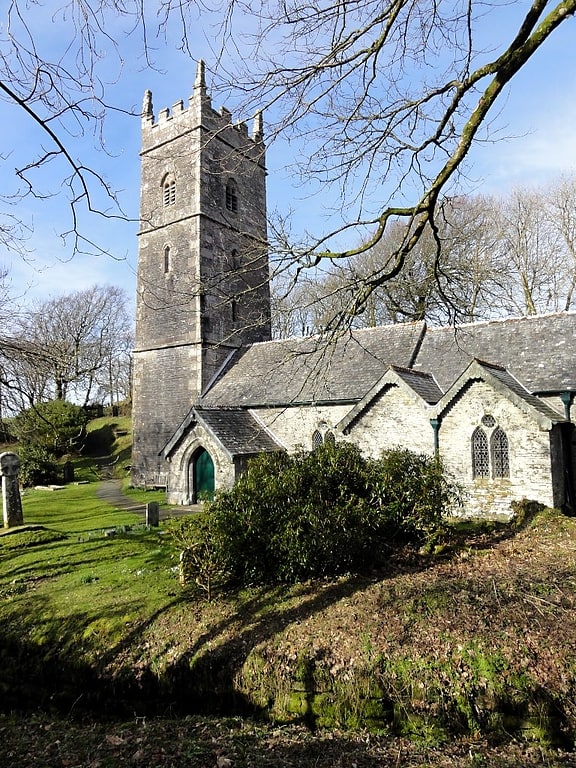
Church in Lesnewth, England. St Michael and All Angels’ Church, Lesnewth is a Grade II* listed parish church in the Church of England in Lesnewth, Cornwall.[6]
Condolden
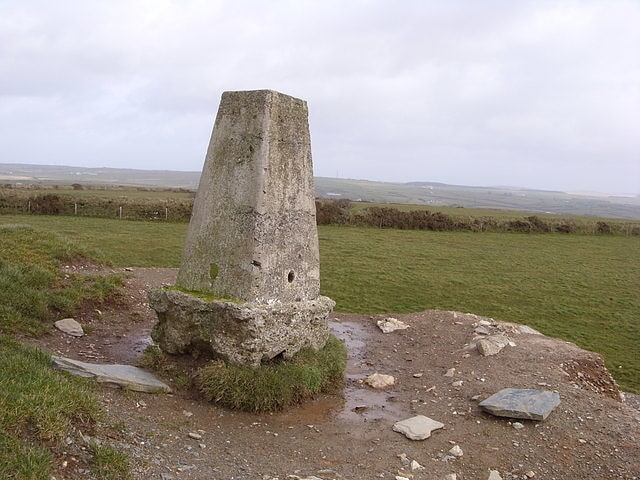
Condolden is a hill in north Cornwall, England, UK. The summit is 308 metres above ordnance datum.
Condolden is two miles southeast of Tintagel village and is on the eastern border of Tintagel civil parish between Waterpit Down and Penpethy. It is the highest point in the parish.
The largest of the Bronze Age barrows in Tintagel is at Condolden. On the edges of the hill are Halgabron, Trenale, Downrow, Truas, Menadue and Trewarmett. Near Trenale was the Iron Age fort of Trenale Bury which was ploughed up during the Second World War. The barrow has not been excavated and is topped by an Ordnance Survey triangulation point. The land is used for arable farming.[7]
Hendraburnick
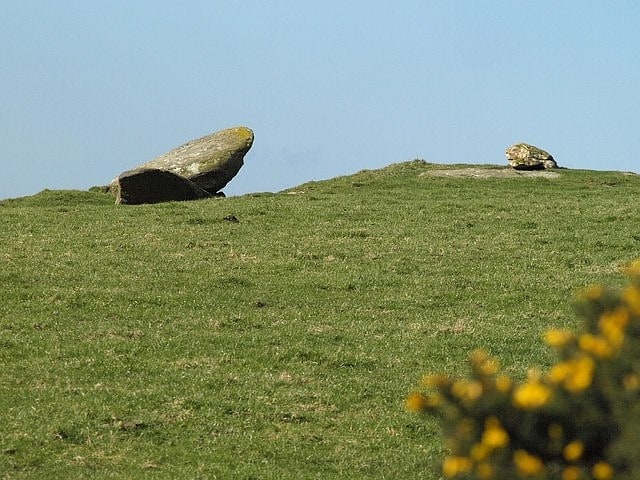
Human settlement in England. Hendraburnick is a farmstead near Davidstow, Cornwall, England. On Hendraburnick Down is the source of the River Camel.
In the medieval period, Hendraburnick was a manor held under Launceston Castle. Feet of fines records that in 1383 some land in the settlement of Hendraburnick was held by a Roger Knyght, reverting on his death to a John Lordman of Treleigh.
A 17th century farmhouse there is a grade II listed building.
Hendraburnick Quoit to the north east is a Late Neolithic dolmen, regarded as "the most decorated or deliberately marked stone in southern Britain".[8]